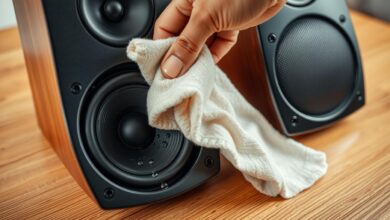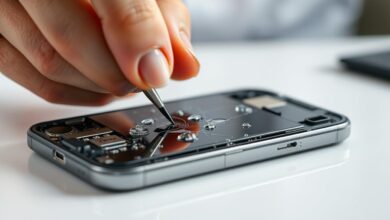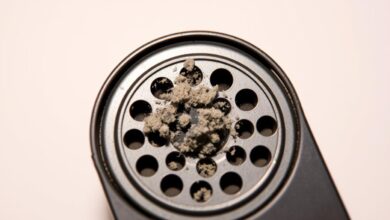how to get water out of my phone
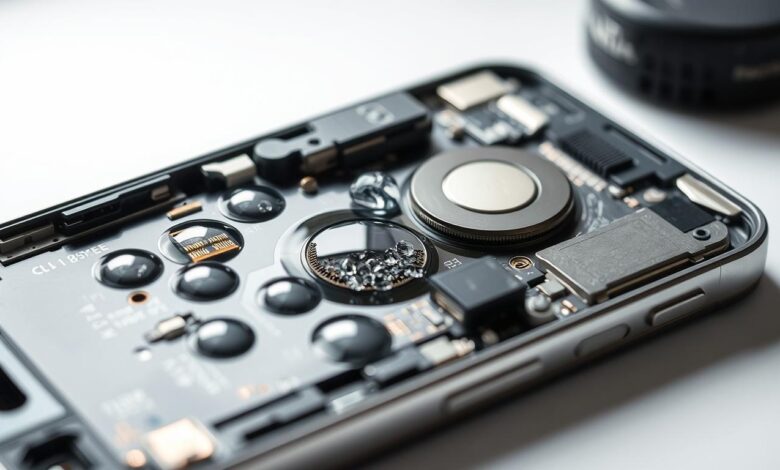
Getting your phone wet can be really stressful. But, knowing how to handle it can save your device.
I once had a close call with water damage. Luckily, I knew what to do. Now, I’ll share how to fix a wet phone and avoid more harm.
Knowing how to repair water damage is key. It’s important to act fast and follow the right steps to fix your phone.
Key Takeaways
- Act quickly to minimize water damage
- Turn off your phone immediately
- Avoid using heat to dry your phone
- Use desiccants or silica gel packets to absorb moisture
- Seek professional help if you’re unsure
Understanding the Dangers of Water Damage
Water damage is a big worry for smartphone users. Water and electronics don’t get along, leading to problems like minor issues or total failure.
Types of Water Damage and Their Effects
There are several types of water damage, each with its own problems. Freshwater, saltwater, and contaminated water can harm your phone differently. Saltwater, for example, is very corrosive and can cause more damage over time.
Water damage can happen right away or later. Sometimes, a phone seems fine after getting wet, but then it fails due to corrosion or short circuits.
The Critical Timeline for Saving Your Device
Acting fast is key when your phone gets wet. The sooner you start, the better your chances of saving it. Knowing what to do right away is very important.
For more detailed steps on saving a wet cell phone, check out guides like the one on wikiHow. They offer detailed instructions.
Water Resistance Ratings Explained
Many phones today have some water resistance, shown by ratings like IP68. It’s important to understand these ratings to know how vulnerable your phone is to water damage. Even though they’re water-resistant, they’re not waterproof, and the level of protection varies.
Knowing your phone’s limits is crucial. Take steps to avoid getting it wet. Even water-resistant phones can still get damaged under certain conditions, like being underwater for too long or exposed to different types of water.
Immediate Actions to Take When Your Phone Gets Wet
If your phone gets wet, act fast to save it. The first few seconds are key to saving your device. Quick and right actions can help a lot in fixing a wet phone.
Power Off Your Device Immediately
First, turn off your phone right away. This stops short circuits that can harm it more. Water in the circuits can cause corrosion and damage.
Remove External Components (Case, SIM Card, SD Card)
Then, take off the phone case, SIM card, and SD card. This lets air get to more areas, helping it dry. It’s also a chance to check these parts for damage.
Wipe Down External Surfaces Properly
Use a soft cloth to wipe the outside of your phone. This removes water and is key for drying out a wet phone. Be gentle to avoid pushing water into openings.
Avoid Charging or Using the Device
Don’t charge or use your phone until it’s dry. Charging a wet phone can cause serious harm, like short circuits that make it unusable.
| Immediate Action | Purpose | Benefit |
|---|---|---|
| Power Off Device | Prevent short circuits | Reduces risk of permanent damage |
| Remove External Components | Expose surfaces to air | Aids in drying process |
| Wipe Down External Surfaces | Remove visible water | Prevents further water ingress |
| Avoid Charging or Using | Prevent damage from short circuits | Ensures device safety until dry |
How to Get Water Out of My Phone: Step-by-Step Process
If your phone got wet, it’s important to act fast. This guide will help you remove water and maybe save your phone from damage.
Removing Visible Water from Ports and Openings
Start by carefully removing any water you can see. Tilt your phone to let gravity help drain it. But don’t push water into your phone.
Positioning Your Phone for Optimal Drainage
Place your phone in a way that helps water drain out. Try putting it upside down or at an angle. This helps keep water out of your phone’s inside parts.
Using Gentle Air Movement Techniques
Use soft air to help dry your phone. A soft cloth or a fan on low can help. But don’t use heat or blow air directly into your phone’s openings. For more tips, check out this resource.
Timing: How Long to Wait Before Testing
Waiting is key. Wait at least 24 to 48 hours before trying to turn it on. This lets the moisture dry out, lowering the chance of damage when you turn it on.
By following these steps, you can increase your phone’s chances of survival. Remember, quick action and patience are crucial during the drying process.
The Rice Method: Does It Really Work?
The rice method is a popular DIY fix for water-damaged phones. But, many question its effectiveness. When your phone gets wet, you might try quick fixes like rice.
The Science Behind the Rice Technique
People think rice can pull moisture from a wet phone. It’s believed to dry out the phone’s parts. But, scientific proof for this method is lacking. Some say it works, while others doubt it.
Proper Implementation for Best Results
To use rice correctly, put your phone in a container of dry rice. Make sure it’s fully covered. Leave it for at least 48 hours to soak up moisture.
It’s important to not turn on your phone or charge it during this time. Doing so could harm it more.
Limitations and Misconceptions
Many think rice can instantly fix a wet phone. But, rice is not a sure fix. Its success depends on the damage’s extent. Also, rice can clog phone ports, causing issues.
My Personal Experience with the Rice Method
I tried the rice method on a water-damaged phone. It seemed to work at first, but later, I found internal damage. This taught me that rice is not always enough to dry out a wet phone or fix water damage.
Having dealt with a water-damaged phone, I learned that
“The key to successful water damage recovery is often a combination of immediate action and the right drying techniques.”
Even though the rice method has its flaws, it’s still a common and easy solution for those trying to save their phone after an accident.
More Effective Alternatives to Rice
There are better ways to dry your phone after it gets wet than using rice. Rice can absorb moisture, but it’s not the best option. There are more effective waterlogged phone solutions available.
Silica Gel Packets: The Superior Desiccant
Silica gel packets are a great alternative to rice for drying wet electronics. They are made to absorb moisture well, making them a better choice for drying your phone. You can find silica gel packets in shoe boxes or packaging materials.
To use them, put your phone in a container with several silica gel packets and seal it. This method is more effective than rice because silica gel is a more potent desiccant.
Commercial Moisture Absorbers
Commercial moisture absorbers are also effective for drying a wet phone. Products like DampRid or Moisture Absorber bags can absorb moisture from the air. They are useful for drying out your device.
To use them, place your phone in a sealed container with the moisture absorber, and let it sit for a few days.
Uncooked Instant Oatmeal as an Alternative
Uncooked instant oatmeal can also be used to dry out your phone. It’s not as effective as silica gel, but it can still absorb moisture. To use oatmeal, place your phone in a container filled with uncooked instant oatmeal, making sure that the phone is fully covered.
Seal the container and let it sit for a few days.
Creating a DIY Drying Kit for Emergencies
Creating a DIY drying kit can be useful for emergencies. You can gather silica gel packets, commercial moisture absorbers, or uncooked instant oatmeal and store them in a container. Having this kit on hand can help you quickly respond to water damage and potentially save your phone.
To remove water from phone effectively, it’s essential to act quickly and use the right materials.
By considering these alternatives, you can find a more effective smartphone water damage fix and potentially save your device from water damage.
Using Specialized Equipment for Water Extraction
Specialized equipment can save your phone from damage. When simple methods like rice or silica gel don’t work, advanced techniques can help. These methods aim to rescue your device.
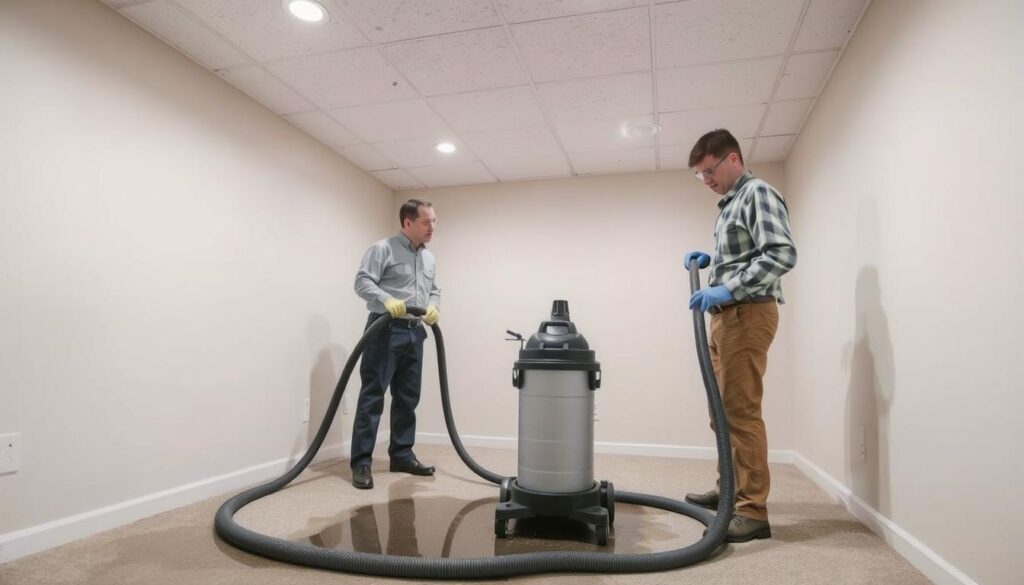
Vacuum Methods (Without Heat)
A vacuum can remove water from your phone’s small spaces. It’s important to use a vacuum without heat to avoid damage. A gentle vacuum suction can safely pull out water.
Compressed Air Techniques
Compressed air can help get water out of your phone’s openings. But, use it carefully to avoid pushing water deeper. Short bursts of air work well, but don’t spray too close.
Professional Drying Chambers
Professional drying chambers are made for drying wet electronics. They can be very effective in saving a wet phone. These devices are not for home use but are common in repair shops.
Ultrasonic Cleaning (For Professionals Only)
Ultrasonic cleaning uses sound waves to clean water-damaged phones. It’s a method for experts because it can cause damage if not done right. It’s a detailed way to fix water damage repair when done correctly.
In conclusion, using special equipment can greatly help fix a wet phone. Methods like vacuum, compressed air, or professional services offer a detailed approach. These techniques are key to water extraction and saving your phone.
What NOT to Do When Your Phone Is Wet
When your phone gets wet, it’s crucial to avoid certain actions to prevent damage. The urge to act fast can sometimes lead to mistakes. Knowing what not to do is as important as knowing what to do.
Avoid Heat Sources (Hairdryers, Ovens, Microwaves)
Using heat to dry your phone might seem like a good idea. But it can actually cause more harm than good. Heat can warp internal components or damage the battery, leading to a dangerous situation. Never use a hairdryer, oven, or microwave to dry your phone.
Don’t Shake or Tap Aggressively
It might be tempting to shake or tap your phone to remove water. But this can push water further into the device, causing more damage. Gentle handling is key when dealing with a wet phone.
Skip These Common but Harmful “Solutions”
Some methods, like placing your phone in a bag of rice, are often touted as solutions. But they can be ineffective or even harmful. Rice can leave behind dust or starch that can further clog your phone’s ports. Instead, consider using silica gel packets or a desiccant.
Why Turning On Your Phone Too Soon Is Risky
Turning on your phone before it’s completely dry can cause a short circuit. This can lead to irreversible damage. It’s crucial to wait until you’re sure your phone is dry before attempting to power it on.
| Action | Potential Damage |
|---|---|
| Using heat sources | Warping internal components, damaging battery |
| Shaking or tapping aggressively | Pushing water further into the device |
| Turning on too soon | Causes short circuit, irreversible damage |
By avoiding these common mistakes, you can significantly improve the chances of successfully recovering your phone from water exposure. Patience and gentle handling are key to drying out a wet phone effectively.
Specific Solutions for Different Water Damage Scenarios
The type of liquid your phone is exposed to matters a lot. Different liquids can damage your phone in different ways. Knowing this helps you save your device.
Toilet Water Submersion (Disinfection Protocol)
Toilet water is very dangerous because of harmful bacteria. Act fast. Turn off your phone and take out any parts you can. Clean the outside with isopropyl alcohol to stop bacteria. But, don’t let any liquids get inside your phone.
Pool or Salt Water Exposure (Dealing with Corrosion)
Pool or salt water can harm your phone because they corrode. Salt water is especially bad because it corrodes fast. Try rinsing with fresh water, but don’t push water into your phone. Then, dry it out with a desiccant.
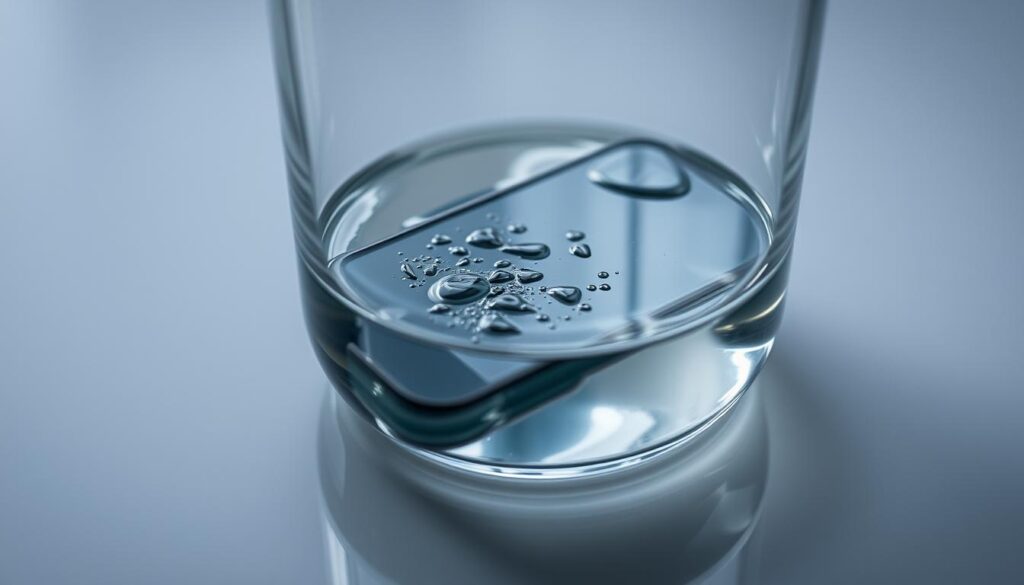
Rain or Fresh Water Incidents
Fresh water is less harmful than salt or dirty water. But, you must act quickly. Dry the outside gently and use a drying material for the inside. Don’t use heat, as it can damage your phone.
Liquid Spills (Coffee, Soda, Alcohol)
Liquid spills are tricky because of sugar and corrosion risk. Clean it right away. Use a soft cloth to soak up spills, and don’t push liquids into your phone. A mix of water and white vinegar might help some spills, but be careful.
iPhone vs. Android: Model-Specific Recovery Techniques
Different smartphones, like iPhones and Androids, have their own ways to recover from water damage. Knowing these differences is key to saving your device.
iPhone Water Eject Shortcuts and Settings
iPhones have special features to help with water damage. Some models have a water ejection feature. You can find this in the Shortcuts app as the “Water Eject” shortcut. It uses sound waves to push water out.
iPhone users can also check for water damage indicators. Look in the SIM card tray or other internal spots.
Samsung and Other Android Emergency Modes
Androids, like Samsung phones, have emergency modes for water damage. For example, Samsung’s Safe Mode is activated by pressing and holding the power button, then releasing and holding the volume down button.
Other Androids might have similar modes to help with recovery.
Accessing Water Damage Indicators on Different Models
Both iPhones and Androids have indicators for water damage. iPhones check the SIM card tray or headphone jack (older models). Androids’ indicators vary but are often in similar spots.
| Device Type | Indicator Location | Normal Color | Damaged Color |
|---|---|---|---|
| iPhone | SIM card tray | White or Silver | Red or Pink |
| Samsung Android | SIM card slot or near memory card | White | Pink or Red |
Model-Specific Disassembly Considerations
Disassembling a wet phone is sometimes needed. But, it’s risky due to model differences. iPhones need special tools, while some Androids are easier to open.
Always check your device’s manual or online guides before disassembling.
Knowing how to recover your iPhone or Android can save your phone after water damage.
When to Seek Professional Help
Knowing when your water-damaged phone needs a pro can save you money and time.
Signs That DIY Methods Aren’t Enough
If DIY drying doesn’t work, look out for these signs:
- Corrosion or mineral deposits on internal parts
- Moisture keeps coming back after drying
- Issues like faulty charging ports or speakers
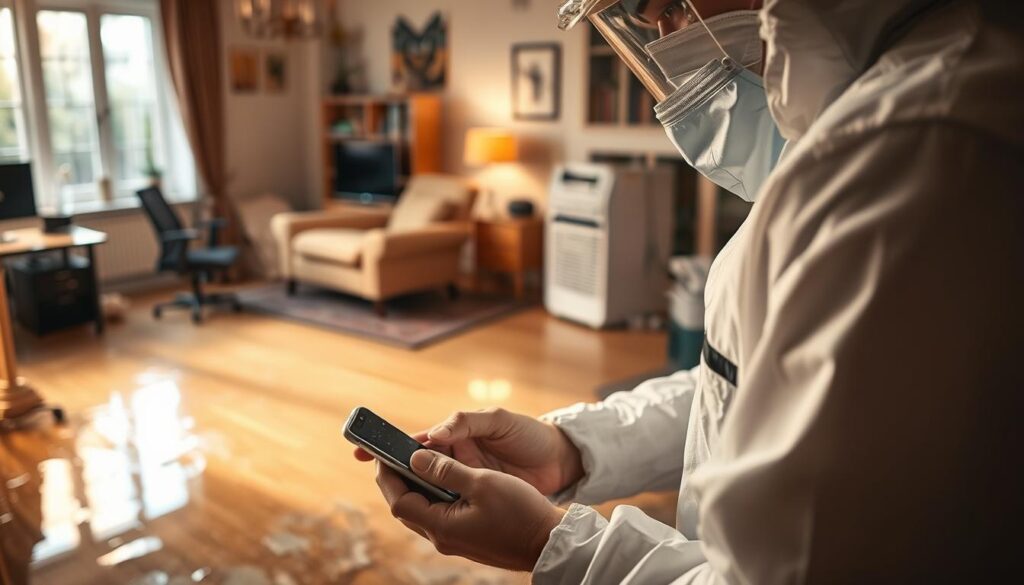
Finding a Reputable Repair Service
To find a reliable smartphone water damage fix service, check:
- Customer reviews and ratings
- Manufacturer certifications
- Clear repair process and warranty details
Apple Genius Bar vs. Authorized Service Providers
iPhone users might prefer the Apple Genius Bar for expert help. But, authorized service providers can offer quality repairs at different prices.
Expected Costs and Timeframes for Professional Repair
Repair costs vary based on damage and phone type. Expect to pay $50 to over $200. Repairs usually take a few days.
Testing Your Phone After Water Exposure
After drying your phone, it’s time to test it. This step is crucial to make sure it works right and there’s no hidden damage. As Apple advises, drying your phone fast is key, but checking it works is just as important.
Safe Power-Up Procedure
Make sure your phone is dry before turning it on. A wet phone can cause short circuits and more damage. If you’re not sure, wait a bit longer.
When ready, plug it into a charger or press the power button. If it doesn’t start right away, don’t worry. Let it charge for a while before trying again. For tips on drying your phone’s charging port, check wikiHow.
Testing Core Functions Systematically
Once your phone is on, test its main functions:
- Check if the screen is responsive to touch.
- Make a call to test the speaker and microphone.
- Play some music or a video to verify the audio and display.
- Test the camera, both front and rear.
- Ensure Wi-Fi and Bluetooth are connecting properly.
Hidden Damage: What to Look For Weeks Later
Water damage might not show up right away. Over time, you might see:
- Corrosion on the SIM card or SD card slots.
- Battery drain issues or overheating.
- Malfunctioning buttons or switches.
As Consumer Reports points out, water damage can be hidden and not show up right away. Keep an eye on your phone’s performance weeks after water exposure.
Backup Strategies After Water Damage
If your phone works, back up your data right away. If it won’t turn on, get professional help to get your data back. Regular backups are key, as the quote says, “the best way to ensure your data is safe is by backing it up regularly.” Use cloud services like Google Drive or iCloud to keep your information safe.
Insurance, Warranty, and Replacement Options
Water damage to your phone can be costly. But, you might have insurance or warranty that covers it. Knowing this can help you save money.
Understanding Your Warranty Coverage for Water Damage
Phone makers usually offer a warranty for defects. But, water damage is often not covered. It’s key to check your warranty to see what’s included.
AppleCare+ and Samsung Care+ are extended warranties that cover accidents, including water damage, for a fee. They can give you peace of mind and protect your wallet.
Phone Insurance Claims Process
If you have insurance, you’ll need to file a claim for water damage. You’ll contact your provider, share the incident details, and follow their steps.
“The claims process can vary a lot between providers,” says an insurance expert. “So, it’s important to know your policy’s specifics.”
AppleCare+ and Samsung Care+ Specifics
AppleCare+ and Samsung Care+ offer extra protection, including for water damage. With AppleCare+, you can get your iPhone fixed or replaced for a fee.
Samsung Care+ also covers accidental damage, including water, with options for multiple claims.
When to Consider Replacement vs. Repair
Choosing to repair or replace your phone depends on several things. These include the damage’s extent, repair costs, and your phone’s age. If repair costs are near or over your phone’s value, replacing might be better.
Think about the environmental impact too. Repairing can be more eco-friendly than buying a new one.
Conclusion
Dealing with a wet phone can be stressful. But, acting quickly and following the right steps can help a lot. We’ve looked at many ways to get water out of your phone, from quick fixes to more advanced methods.
Using rice, silica gel packets, or special tools are good options. But, it’s important to be patient and careful. Don’t use heat or turn on your phone too soon. If you’re not sure what to do, getting help from a professional might be best.
Knowing how to fix a wet phone and understanding your options can save your device. Also, think about getting a waterproof case to prevent future problems. This way, you can enjoy using your phone again without worry.
FAQ
How do I know if my phone has water damage?
Look for signs like corrosion, water spots, or condensation. Check the water damage indicators in the SIM card tray or on the logic board.
Can I use a hair dryer to dry my phone?
No, heat from a hair dryer can harm your phone’s internal parts. Instead, use air or desiccants to dry it gently.
How long should I wait before turning on my phone after it’s been exposed to water?
Wait 24 to 48 hours before turning it on. This lets the parts dry out properly.
Will the rice method damage my phone?
The rice method might not be the best choice. Rice dust can get into your phone and cause damage. Try silica gel packets or commercial moisture absorbers instead.
Can I repair my phone myself after water damage?
It depends on the damage. For minor issues, DIY might work. But for serious damage, get help from a professional repair service.
How can I prevent water damage to my phone in the future?
Use a waterproof case and be careful near water. Avoid too much moisture. Back up your data regularly to lessen losses if your phone gets wet.
Is my phone’s warranty or insurance coverage applicable for water damage?
Check your warranty or insurance to see if it covers water damage. Some brands, like Apple and Samsung, offer plans for accidental damage, including water exposure.
What should I do if my phone doesn’t turn on after drying?
If your phone won’t turn on after drying, it might be badly damaged. Try charging it. If it still doesn’t work, get help from a repair service.
How can I backup my data after water damage?
If your phone works, back up your data right away. Use cloud services like Google Drive or iCloud, or transfer data to a computer or external device.
Can I use my phone while it’s drying?
No, don’t use or charge your phone while it’s drying. This can cause more damage or short circuits.
